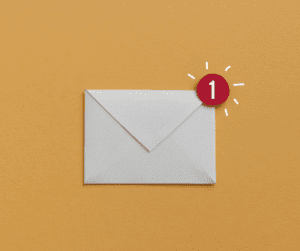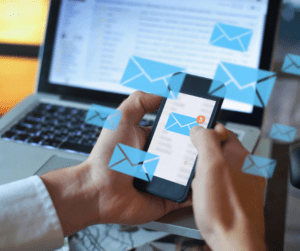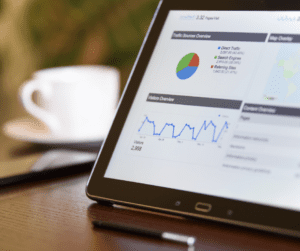Nobody likes being inundated with spammy emails, and often we shove them straight into our deleted items before even giving them a read. Has it ever crossed your mind why these emails don’t appeal to us? And better yet, why businesses still bother with email marketing campaigns?
Now, you might be thinking that email is an outdated marketing tool whose time to shine ended when we changed from dial-up modems to Wi-Fi. But you are wrong! Email marketing is still one of the most effective marketing channels for nurturing and generating leads, increasing brand awareness and reaching potential new customers. Email marketing is dubbed as one of the best ways to grow your business with 78% of marketers having seen an increase in email engagement in the last 12 months and 80% of business professionals claiming email marketing improves customer retention.
To add, did you know that email has the largest reach of any digital channel on earth and has an average ROI of 4000%? With such great odds, you can’t afford to get email marketing wrong.
Has that piqued your interest? Let’s run through how to start a successful email marketing campaign for beginners with this step-by-step process.
7 steps to start a successful email marketing campaign
Step 1: Establish your goal
What are you hoping to achieve from your email marketing campaign?
Is it to generate leads to the website, run a promotion, find new business, improve click-through rates, build brand awareness or increase conversions?

Whatever your goal, it’s important that it is clear, measurable and attainable. Establishing your goal will also have an impact on the kind of email marketing strategy you choose.
Step 2: Grow your list
It’s all fine and dandy to have a goal, but you need to gather a database before you market to them. So, how do you go about doing so?
The power of social media! Leverage off your social media following and use it as a lead magnet to encourage newsletter sign-ups and provide incentives to do so! Humans like to feel important, so make them believe they are. Give the audience a sense of exclusivity when they sign up by offering them discount codes or a once in a lifetime deal.
Growing your email marketing list requires a strong call to action and a sign-up form that’s optimised for high conversions. Make sure your form is eye-catching, serving helpful content, includes your privacy policy, and adds value for the viewer.
Step 3: Segment your audience
Not everyone in your database is going to have the same needs. So, see this as an opportunity to get your brand in front of a diverse audience.
Segment your audience to target different people for different campaigns or offerings. This gives your brand more targeted communication, using a unique voice to speak to your niche segment.

Different ways of segmentation can include:
- Demographics.
- Location.
- Newsletter signups.
- Interests.
- Repeat buyers.
- Daily subscribers.
For example, some people may only be interested in discounted offers while others may be interested in when the latest version of your product will be released. Whatever it is, use segmenting your audience as a strength.
Step 4: Decide on the type of email campaign
We’ve gathered our list using lead magnets and segmented our audience. Before you continue with the next steps, you need to decide on the type of email campaign you want to use. Let’s look at the different types to suit your campaign goals:

Newsletters – This is used to communicate interesting and valuable information to the user.
Acquisition emails – An acquisition email is usually used to advertise your campaign to generate leads to your website.
Retention emails – These are used to reengage your audience and to educate them on the value of your business.
Promotional emails – This is the most common type of email marketing. These are used to get the message out to new or existing customers about any special discounts, promotions, special offers or limited deals.
Step 5: Give your audience awesome content
The first four steps are in vain if you’re not providing your audience with engaging, useful content that they want to receive. Remember to always add value before trying to extract it! This helps you to build a relationship with your customers and increases brand loyalty.
Your subject line should be short, sweet and leave the audience wanting more. As mentioned previously, make the audience feel special with personalised subject lines that show your brands personality. Remember, your subject line is your first impression so make them intrigued enough to want to press that “read” button!
Lastly, structure the body of your email with enticing visuals, a clear layout, striking copy and a strong call to action.
Your copy is the most important element of your email marketing campaign so make sure you have a strong copywriter if writing is not your fort. If your content isn’t engaging, the audience’s attention won’t be captured long enough to reach your CTA.
Step 6: Automate your emails
Instead of wasting time manually writing and sending your emails, use automated platforms, such as Mailchimp or GetResponse. These platforms will help you compile and schedule your campaigns in advance without missing a beat.

Email automation has many benefits including:
- Saving time with minimal effort or intervention.
- Nurturing leads.
- Better targeting and segmentation.
- Lower overall costs. Many of the email marketing platforms offer free packages.
- Reduced risk of human error.
- Consistency.
- Detailed reporting.
- Accelerates transactions, and
- Increases revenue.
Step 7: Measure your results
Your final step on how to start an email marketing campaign is to measure your results. Using analytics lets you measure results such as bounce-backs, open rates, click-through rates, and unsubscribers.

Bouncebacks – This can constitute hard or soft bounce backs. Hard bounce backs are email addresses that don’t exist and can be deleted from your database while soft bounce backs are addresses that have a short-term issue and shouldn’t be deleted.
Open rates – This is the percentage of people who have opened the email. This shows you how successful you were in capturing their attention of your audience. A low open rate means need to pay more attention to adding value to the person who is receiving your email.
Click-through rate – This is the number of people who clicked on a link in your email body. A low rate means your content or message isn’t resonating with them. Time to rethink your strategy!
Unsubscribers – How many people have unsubscribed from receiving your information. If it’s high, time to dive back in and have a look at your campaign as a whole.
Measuring and analysing results from your email marketing campaign provides you with information on which areas were a success, which need attention and which to remove, ensuring a triumphant campaign going forward.
How does it add value to your business?
Having a strong email marketing campaign has multiple benefits for any business, big or small. It can provide a lot of investment with minimal effort, an opportunity to reach a wide audience, build a relationship with your customers through personal communication, increase brand awareness and encourage business growth.
If you follow our seven steps on how to start an email marketing campaign for beginners, you’ll be on your way to achieving your business goals!







